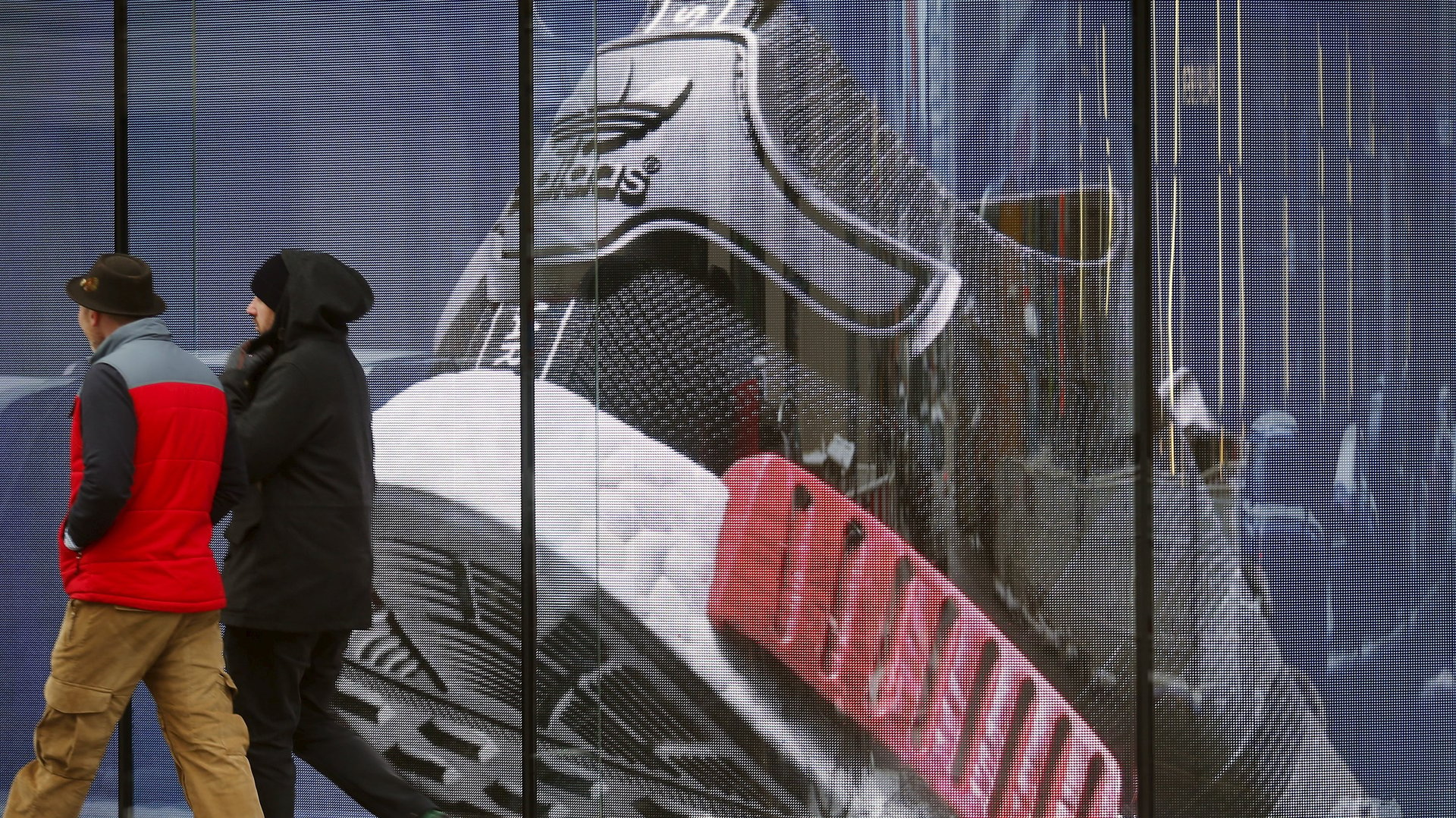Adidas is gaining ground on Nike with a fast fashion strategy
“We are not a fashion company,” said Adidas CEO Kasper Rorsted on the company’s 2016 earnings brief today. “Of course we like to have fashionable products, but we are a sports company.”


“We are not a fashion company,” said Adidas CEO Kasper Rorsted on the company’s 2016 earnings brief today. “Of course we like to have fashionable products, but we are a sports company.”
But it was lifestyle products, more than performance, that drove the company’s stellar results for the year. Globally, Adidas saw sales rise 14% (pdf) to about €19.3 billion ($20.4 billion). Sales of lifestyle items grew 45%, Rorsted said, compared to only 13% for performance-wear.
Sales of retro sneakers like Superstars and Stan Smiths have boomed over the past year, and similar fashion items have helped Adidas to regain ground against rival Nike in the critical US market: Adidas more than doubled its share of the US athletic footwear market to 10% in January.
In addition to sales of retro sneakers and popular new franchises, such as the NMD—the company literally couldn’t make enough of the Boost soles it uses on the NMD and other models to keep up with demand—Adidas found success in 2016 with new programs designed to speed up supply. In its annual report (pdf), the company said it cut production lead times to two months for 80% of its apparel in the fall/winter 2017 season, compared to the 12 to 18-month lead time that has been standard for the major part of its business.
Adidas has been investing in projects such as factories in Germany and the US that will allow it to get top-selling items on shelves much faster than manufacturing in Asia (where Adidas still makes most of its goods) and shipping them in. The strategy is exactly the same as the one that has made fast-fashion retailers Zara and H&M so successful: It allows Adidas to make less product up front, and to quickly replenish items that are selling well. That way, it ends up with less unsold product later, improving its margins.
The company acknowledged as much when talking about its Neo line, which focuses on a younger, more price-conscious consumer. “To ensure success, the adidas neo formula employs a ‘fast fashion’ business model,” it said. By 2020, Adidas says it plans to get 50% of its sales from “speed-enabled” products.
What customers actually buy in the next few years, of course, will frequently come back to style. If this sports company continues to win at making “fashionable products,” sales should only go up.